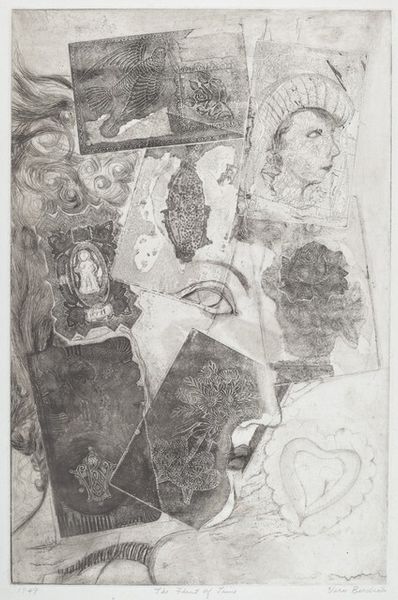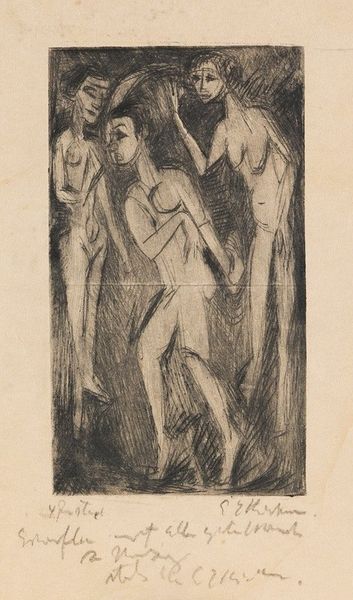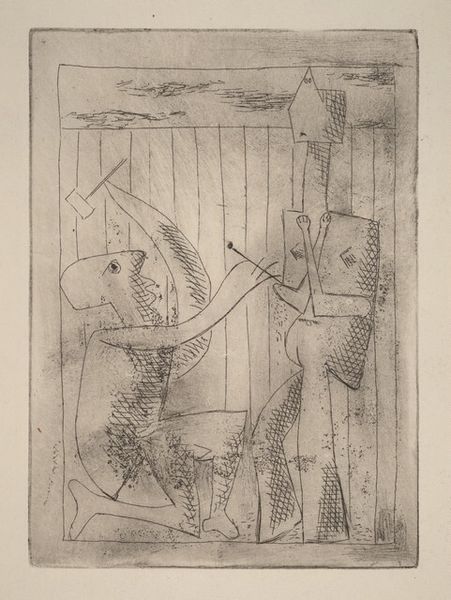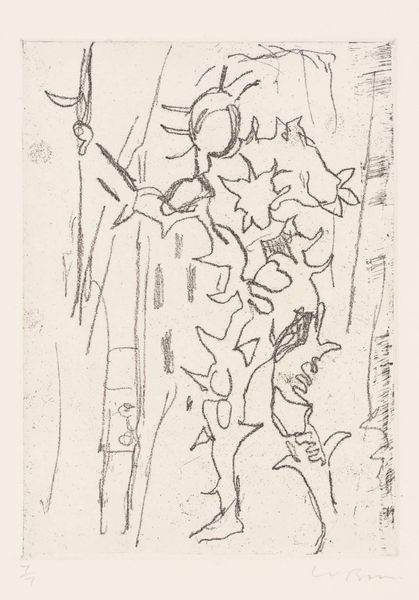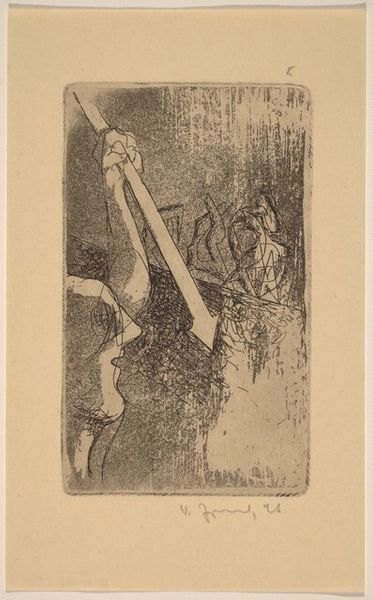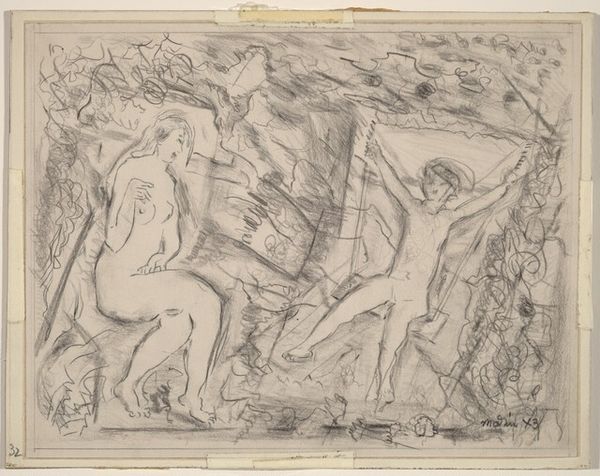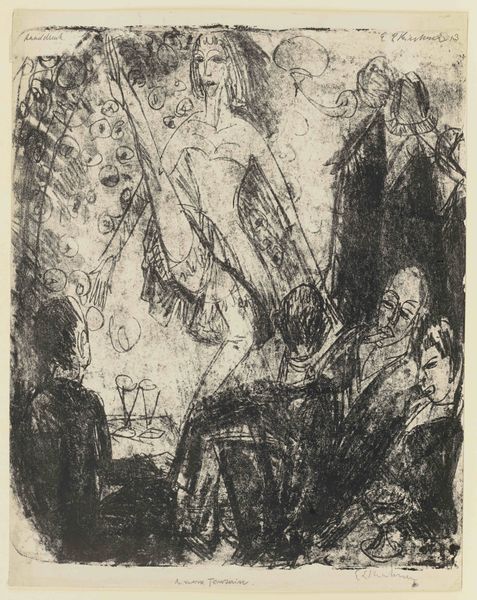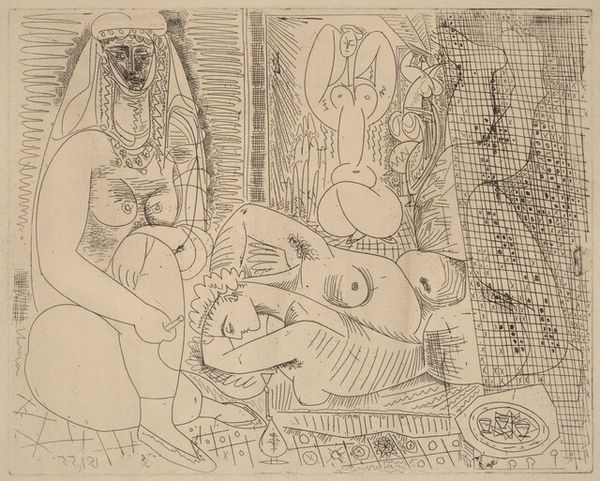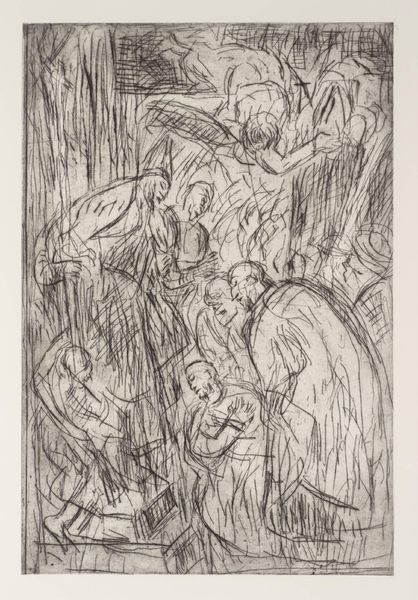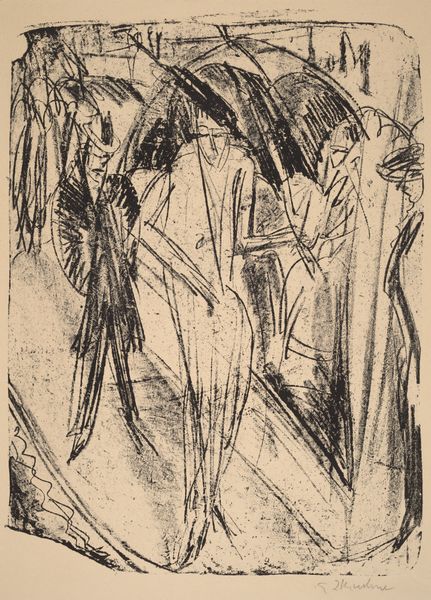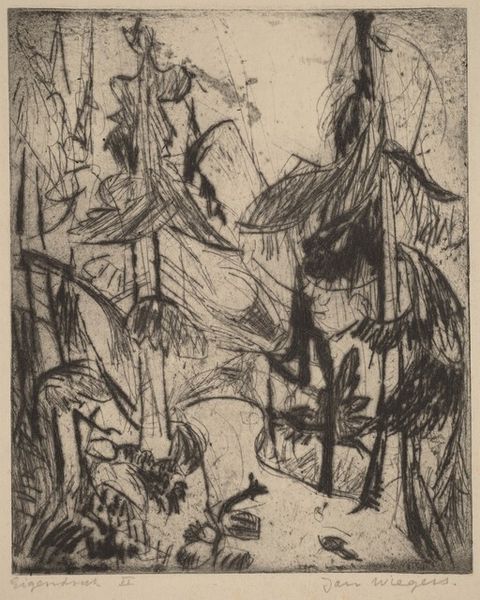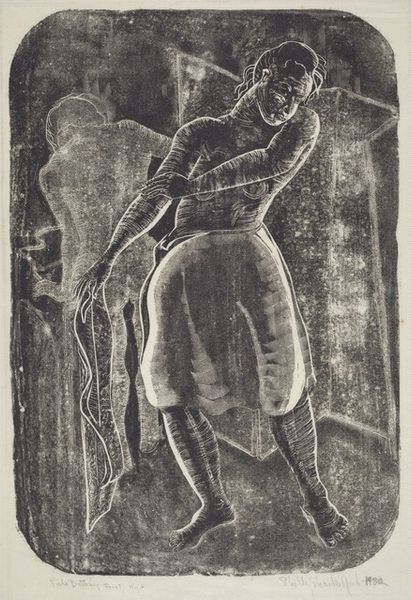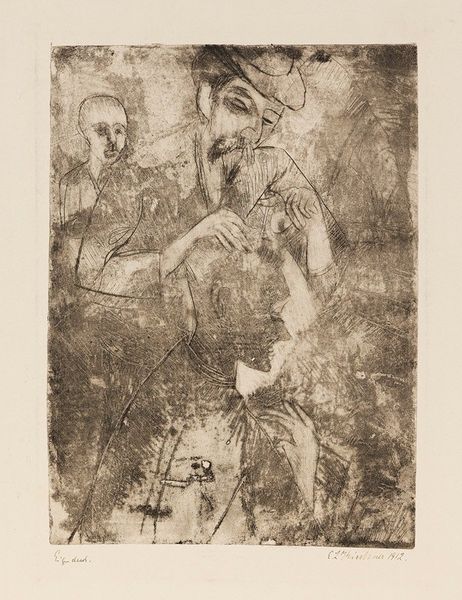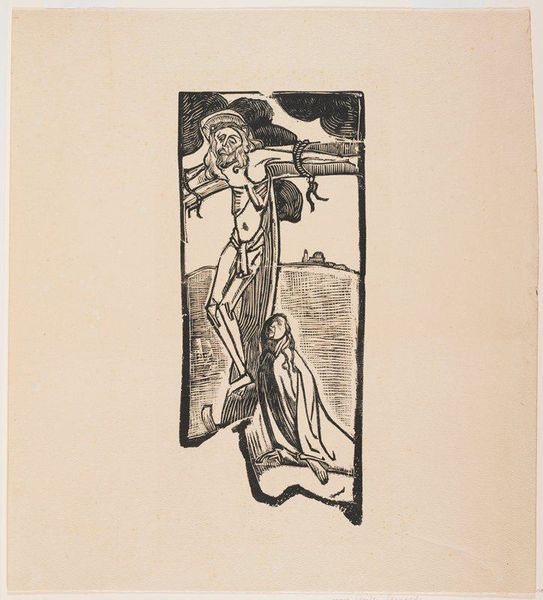
Sculptures Representing Marie-Thérèse and the Head of the Sculptor, with a Vase of Three Flowers (Sculptures représentant Marie-Thérèse et la tête du sculpteur, avec le vase aux trois fleurs) 1933
0:00
0:00
drawing, print, ink
#
portrait
#
drawing
#
cubism
# print
#
pen sketch
#
pencil sketch
#
figuration
#
ink
#
pen work
Copyright: National Gallery of Art: CC0 1.0
Editor: Here we have Picasso’s "Sculptures Representing Marie-Thérèse and the Head of the Sculptor, with a Vase of Three Flowers" from 1933. It’s a drawing, almost a print, made with ink… The crisscrossing lines give it a very fragmented, almost dreamlike feel. What do you see in this piece? Curator: I see a complex layering of symbols. Consider the female figure: Marie-Thérèse was a recurrent muse, embodying youth and vitality for Picasso. Her depiction alongside the sculpted head, ostensibly of himself, invites us to ponder the artist’s self-reflection. What do these juxtaposed images evoke for you? Editor: It's almost like he's placing himself, as the creator, alongside his muse, questioning their relationship? Curator: Precisely. And notice the vase of flowers. Flowers often represent ephemerality, beauty, and the transient nature of life. Their inclusion, viewed against the backdrop of a turbulent seascape, possibly reflects the fleeting nature of both love and artistic inspiration. The sculptures feel permanent, contrasting with the temporality implied by the flowers. Don’t you think? Editor: That’s a powerful contrast. So, is Picasso exploring the enduring quality of art against the temporary nature of life and love, using Marie-Thérèse as a bridge? Curator: That's a plausible reading. The cultural memory associated with sculptures—their monumentality and permanence—plays against the personal, intimate portrayal of Marie-Thérèse, generating tension. It's an intersection of the classical and the contemporary, his inner and outer worlds. Editor: This makes me think about how Picasso perceived himself and his relationship with Marie-Thérèse, almost like a conversation happening on paper. Curator: Indeed. It reminds us that art can serve as a profound form of self-inquiry and cultural dialogue.
Comments
No comments
Be the first to comment and join the conversation on the ultimate creative platform.
